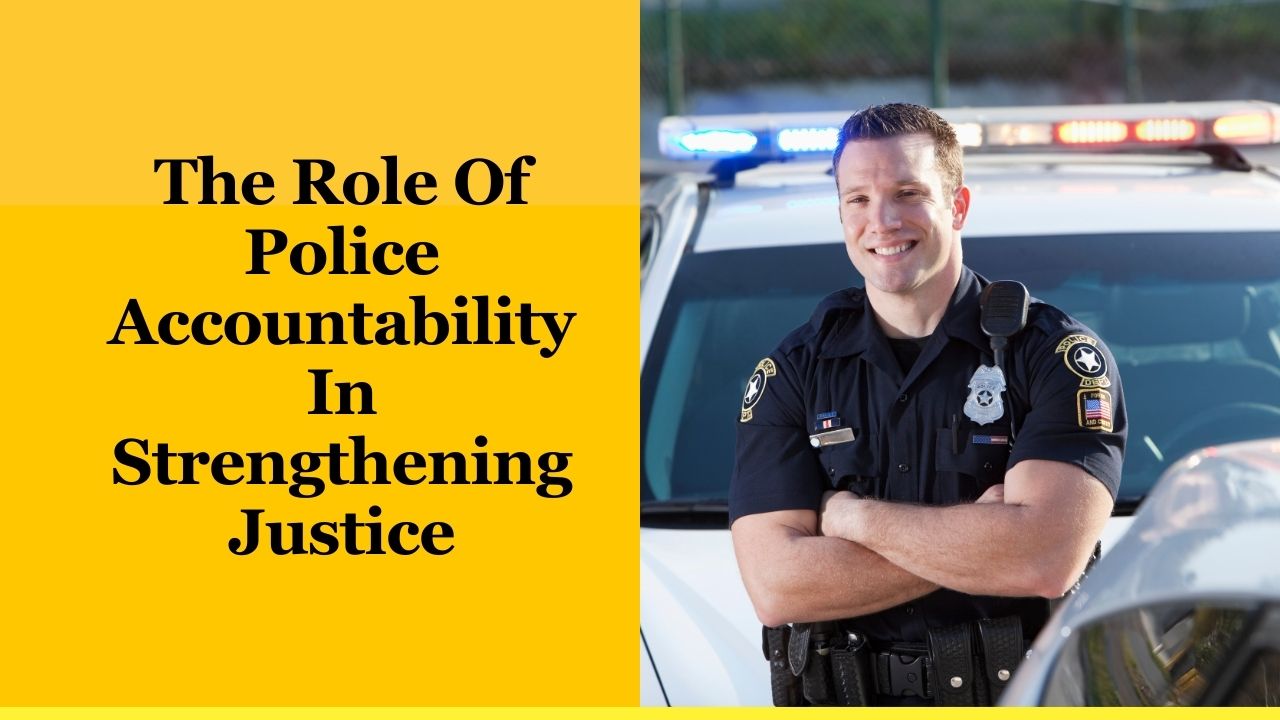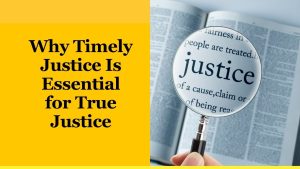A fair and trustworthy justice system relies heavily on public confidence in law enforcement. That confidence is rooted in police accountability—clear rules, independent oversight, transparency, and real consequences when standards are breached.
Over the past few years, several jurisdictions have implemented reforms such as body-worn cameras, civilian oversight boards, use-of-force policies, duty-to-intervene standards, and public reporting systems.
These measures show that accountability does not weaken policing—it strengthens justice by protecting communities, supporting good officers, and reinforcing the public’s trust.
This article explores the role of police accountability in strengthening justice, key reforms happening in 2025–2026, and how they benefit both the public and law enforcement.
Why Police Accountability Is Central to Justice
Police accountability goes beyond punishing misconduct; it ensures fairness, transparency, and integrity throughout the justice system. It strengthens justice in several ways:
- Legitimacy: People comply with the law when they believe the system is fair. Independent investigations and public reporting build that trust.
- Accuracy: Oversight helps prevent wrongful arrests and convictions, ensuring due process.
- Safety: Strong accountability standards reduce excessive force incidents, protect civilians, and improve officer safety.
Without accountability, trust erodes, making it harder for police to do their jobs effectively.
Key Accountability Measures in 2025–2026
Provinces, states, and municipalities are advancing new accountability policies. These are some of the most impactful reforms currently being expanded:
1. Body-Worn Cameras (BWCs)
- Provide real-time evidence of interactions between police and the public.
- Reduce false complaints and speed up investigations.
- Most effective when there are mandatory activation policies, random audits, and penalties for non-use.
- Data shows they can reduce use-of-force incidents, especially in departments with high baseline force rates.
2. Civilian Oversight Boards
- Independent boards review complaints, use-of-force incidents, and disciplinary actions.
- Improve public trust and procedural justice perceptions.
- Must have legal authority, adequate funding, subpoena power, and access to raw data to be effective.
- Many jurisdictions are now strengthening these boards to ensure they have real enforcement power.
3. Updated Use-of-Force and Duty-to-Intervene Policies
- Clear rules on when force can be used reduce unnecessary violence.
- Officers are trained and required to intervene when they witness misconduct.
- Jurisdictions adopting layered reforms—policy changes, public reporting, and independent investigations—are seeing declines in serious-force incidents.
- Regular training and scenario-based simulations reinforce these policies.
4. Independent Investigations and Monitors
- External oversight ensures serious incidents are reviewed by neutral investigators, not internal departments.
- Court-enforced agreements (often called consent decrees) create long-term plans to improve policies, training, and supervision.
- Independent monitors track compliance, publish progress reports, and involve community advisory boards to ensure reforms stick.
5. Public Transparency and Open Data
- Publishing data on use of force, stops, pursuits, and complaints increases trust and allows communities to hold departments accountable.
- Public dashboards, quarterly reports, and machine-readable datasets allow journalists and researchers to evaluate progress.
- Transparency reduces speculation and promotes informed dialogue.
Benefits of Strong Police Accountability
Implementing these reforms yields major benefits for both the public and the justice system:
- Fewer harmful incidents – Use-of-force and misconduct rates decline when oversight and training improve.
- Higher quality investigations and prosecutions – Reliable evidence from body cameras and transparent records reduces wrongful arrests and strengthens court cases.
- Increased public cooperation – When people trust the system, they are more likely to report crimes, act as witnesses, and support police initiatives.
- Improved officer morale and safety – Accountability shields good officers from false accusations and clarifies expectations, reducing stress and conflict.
Where Gaps Still Exist
Despite progress, challenges remain:
- Incomplete data – Many agencies still do not report all use-of-force incidents, especially non-lethal ones.
- Weak enforcement – Policies without penalties for violations fail to change behavior.
- Underfunded oversight boards – Some boards lack the resources, authority, or staff to investigate complaints effectively.
- Cultural resistance – Change can be slow if leadership and rank-and-file officers are not engaged in reform efforts.
Addressing these gaps is essential for long-term success.
The Broader Impact of Police Accountability on Society
Strengthening police accountability has ripple effects that extend far beyond law enforcement agencies. It impacts public health, economic development, community cohesion, and the overall credibility of the justice system.
1. Public Health and Community Well-Being
Excessive use of force and misconduct incidents often have lasting mental and physical effects on communities. When accountability improves:
- Trauma-related stress decreases — Transparent investigations and disciplinary processes reduce community fear and anxiety.
- Mental health crises are handled more safely — Training in crisis response and de-escalation reduces violent outcomes, protecting vulnerable individuals.
- Fewer wrongful arrests mean fewer disruptions to families, employment, and education, which contributes to community stability.
Communities with high trust in law enforcement tend to have better health outcomes because people are more likely to report emergencies, seek help during crises, and cooperate with public health campaigns.
2. Economic Benefits of Accountability
Implementing robust accountability systems also makes economic sense:
- Fewer civil lawsuits — Police misconduct lawsuits cost taxpayers millions annually. Reducing misconduct lowers settlement and litigation costs.
- Reduced turnover — Officers in high-trust departments experience less burnout, lowering recruitment and training expenses.
- Higher business investment — Businesses are more likely to invest in safe, stable communities where public trust is strong.
This shows accountability is not just a moral imperative—it’s also a financially responsible strategy for local governments.
3. Cultural Transformation Within Police Departments
Another powerful benefit of accountability is its ability to transform internal culture:
- Encourages ethical decision-making — When officers see rules applied fairly, they are more likely to uphold ethical standards.
- Rewards professionalism — Transparent systems recognize and reward positive behavior, which improves morale.
- Reduces “code of silence” behavior — Duty-to-intervene rules and strong whistleblower protections make it safer for officers to report misconduct.
This cultural shift helps build healthy relationships between officers and the communities they serve, replacing fear and suspicion with mutual respect.
4. The Role of Technology in Accountability
Modern technology is also playing a crucial role in enhancing accountability efforts:
- Real-time data dashboards can flag high-risk patterns of behavior for early intervention.
- AI-based video analytics can scan body-cam footage to detect policy violations.
- Digital evidence systems improve chain-of-custody integrity, preventing tampering or data loss.
As these technologies mature, they will make oversight more proactive and less reactive, allowing departments to prevent misconduct before it escalates.
Core Accountability Tools
| Tool | Purpose | Key Requirements for Success |
|---|---|---|
| Body-Worn Cameras | Provide evidence, deter misconduct | Mandatory activation, audits, penalties for non-use |
| Civilian Oversight Boards | Independent review and public trust | Legal authority, budget, data access, subpoena power |
| Use-of-Force & Duty-to-Intervene | Reduce excessive force, encourage peer accountability | Clear policies, scenario training, public reporting |
| Independent Investigations | Neutral review of serious incidents | External investigators, community engagement, transparency |
| Open Data Dashboards | Public accountability and analysis | Quarterly releases, machine-readable data, standardized metrics |
How to Strengthen Accountability Further
To build on current reforms, governments and police leaders can:
- Pass laws codifying BWC policies with clear activation and penalty rules.
- Publish all use-of-force data quarterly, including demographic information.
- Expand early-warning systems that flag officers with multiple complaints.
- Fund independent oversight agencies with investigative powers.
- Involve community members in policy-making to increase legitimacy and buy-in.
- Make training on de-escalation and implicit bias mandatory and recurring.
- Create officer wellness programs to reduce stress and prevent misconduct.
Police accountability is not a barrier to justice—it is the foundation of it. Transparent rules, independent oversight, accurate data, and meaningful consequences make communities safer, officers more effective, and courts more confident in the integrity of cases.
By strengthening accountability, societies can protect human rights, build public trust, and reduce harm—ensuring justice systems remain fair, credible, and effective for everyone.
Sustainable change depends on leadership commitment, public engagement, and persistent transparency—but the reward is lasting justice that works for all.
FAQs
How does police accountability strengthen the justice system?
It ensures fairness, prevents misconduct, improves evidence quality, and builds public trust—key factors for an effective justice system.
What role do civilian oversight boards play?
They provide independent review of police actions, improve transparency, and build trust—especially when equipped with legal powers and resources.
Why are body-worn cameras important for accountability?
They provide clear evidence of encounters, deter misconduct, resolve complaints faster, and enhance transparency when paired with strict usage policies.




